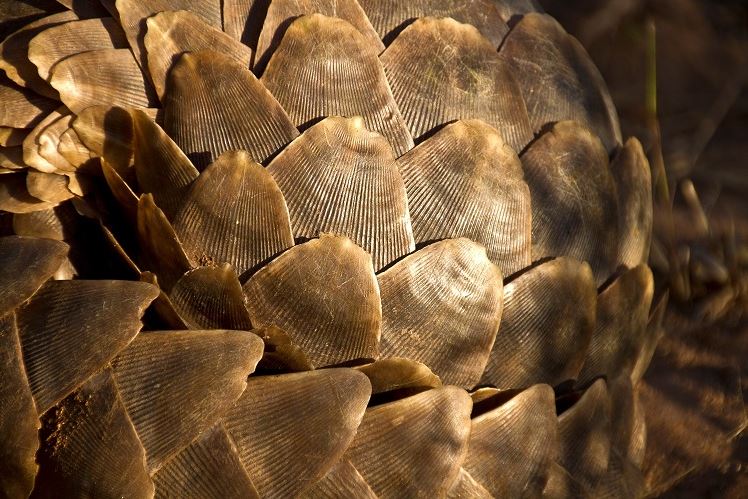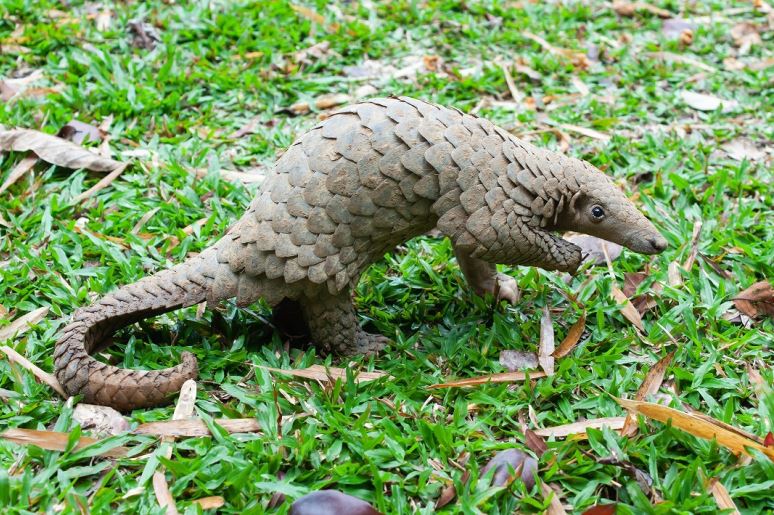March 19, 2024
Pangolins and armadillos are both extraordinary animals. These armor-plated mammals may look similar, but they’re actually not closely related at all. In fact, pangolins are more closely related to dogs and cats than they are to armadillos. In total, there are 20 armadillo species and eight species of pangolin in the world, and each one has a fascinating story to tell.
Have you ever wondered why pangolins and armadillos evolved such amazing armor? Or how they move around? Maybe you’ve even wondered about their mating habits? Or you just want to know what’s the difference between an armadillo and a pangolin? In this article, we’ll take a closer look at both groups, to see what they have in common and explore what makes them unique. Join us as we trundle off in search of answers…
Where do they live?
This is the first key difference. Pangolins can be found across Asia and Africa, where they prefer forested area, whereas armadillos live in the warm, desert areas of the Southwestern United States and Latin America.
What do their names mean?
The name pangolin comes from the Malay word meaning “roll over,” and references the animal’s main defense when it feels threatened – curling up into a protective ball. The name “armadillo” comes from the Spanish for “little armored one”.
How big are they?
Armadillos vary in size, ranging from the tiny pink fairy armadillo, which can fit in the palm of your hand, to the aptly named giant armadillo, which can grow up to 119 lbs. Pangolins, on the other hand, tip the scales somewhere between 4 and 7 pounds and are 12 to 39 inches long.
What do they look like?
Armadillos and pangolins are instantly recognizable by their appearance. Both have long tails and pointed snouts, and they’re roughly the same size. But one key difference is that armadillos have pointy ears, while pangolins have small, rounded ears or ear holes. Armadillos have teeth for chewing insects, while pangolins have no teeth at all. Instead, they simply swallow insects whole.
Both have some amazing armaments, like miniature mammal versions of an armored dinosaur. In fact, armadillos first appeared around 80 million years ago during the Cretaceous era, so may have picked up some evolutionary tips from their dino neighbors. At 60 million years old, Pangolins are no less prehistoric in their appearance.
What is their body armor made of?
Armadillos’ protection is a layer of skin-covered shields made of bone, while pangolins’ armor is a series of keratin scales – that’s the same material as your fingernails.

Pangolin vs. Armadillo: Fun Facts
How do they get around?
Both armadillos and pangolins walk low to the ground, hunched over. An interesting difference is that, while armadillos trundle around on four feet, pangolins are actually bipedal (meaning they walk on two legs instead of four). Look closely, and you’ll see they have their front limbs off the ground.
Pangolins tend to be much slower than armadillos, with a top speed of only 3 miles per hour. Armadillos are comparative sprinters, with a maximum speed of 30 mph.
What about their mating habits?
Let’s start with armadillos. Unlike other mammals, females always give birth to four identical babies that are clones of each other, having all started out as a single embryo. They’re generally antisocial creatures, so the mating season is the only time when the males and females come together. During their lifetime, female armadillos will usually give birth to around 50 babies.
Next up is the pangolins. Because they are Critically Endangered (CR), captive breeding is essential to their survival in the wild. This makes understanding their breeding habits essential. And a recent study in China set out to do just that. From 2016 to 2022, they used closed circuit television (CCTV) surveillance to observe a total of 360 mating events between six males and 24 females. They discovered that although pangolins don’t have a specific courting ritual, they can be quite particular about their mating habits, with different subjects having their own preferred position and even their preferred time of day for getting romantic.
What role do armadillos and pangolins play in their ecosystem?
Pangolins are known as guardians of the forest because they protect trees from getting munched by termites. This helps keep the ecosystem balanced and healthy. Armadillos also help control pests and disperse seeds in their environment. They are known as ecosystem engineers, and are able to adapt to agricultural landscapes in ways that most other animals can’t.
RER biodiversity
The Sunda Pangolin (Manis javanica) is one of 78 mammal species recorded in Restorasi Ekosistem Riau (RER). Like most pangolin, this species is listed as Critically Endangered (CR) by the International Union for Conservation of Nature (IUCN). It is one of 13 critically endangered species recorded in RER.
World Pangolin Day
Pangolins are the most trafficked animals in the world. Due to a mistaken idea that their scales can be used as medicine, these animals have been hunted, caught, traded and sold to buyers all over the world. It’s estimated that over a million animals have been trafficked in the last decade, and the lucrative pangolin trade continues – every year around 200,000 of them are taken from the wild. As a result, pangolin numbers are crashing throughout Asia and Africa and these amazing little animals are close to extinction.

To raise public awareness of this problem, World Pangolin Day was established in 2012. Celebrated every year on the third Saturday in February, this unique occasion is a chance to support conservation efforts and raise awareness. This year’s World Pangolin day will be observed on Saturday, February 17. What will you do to support them?